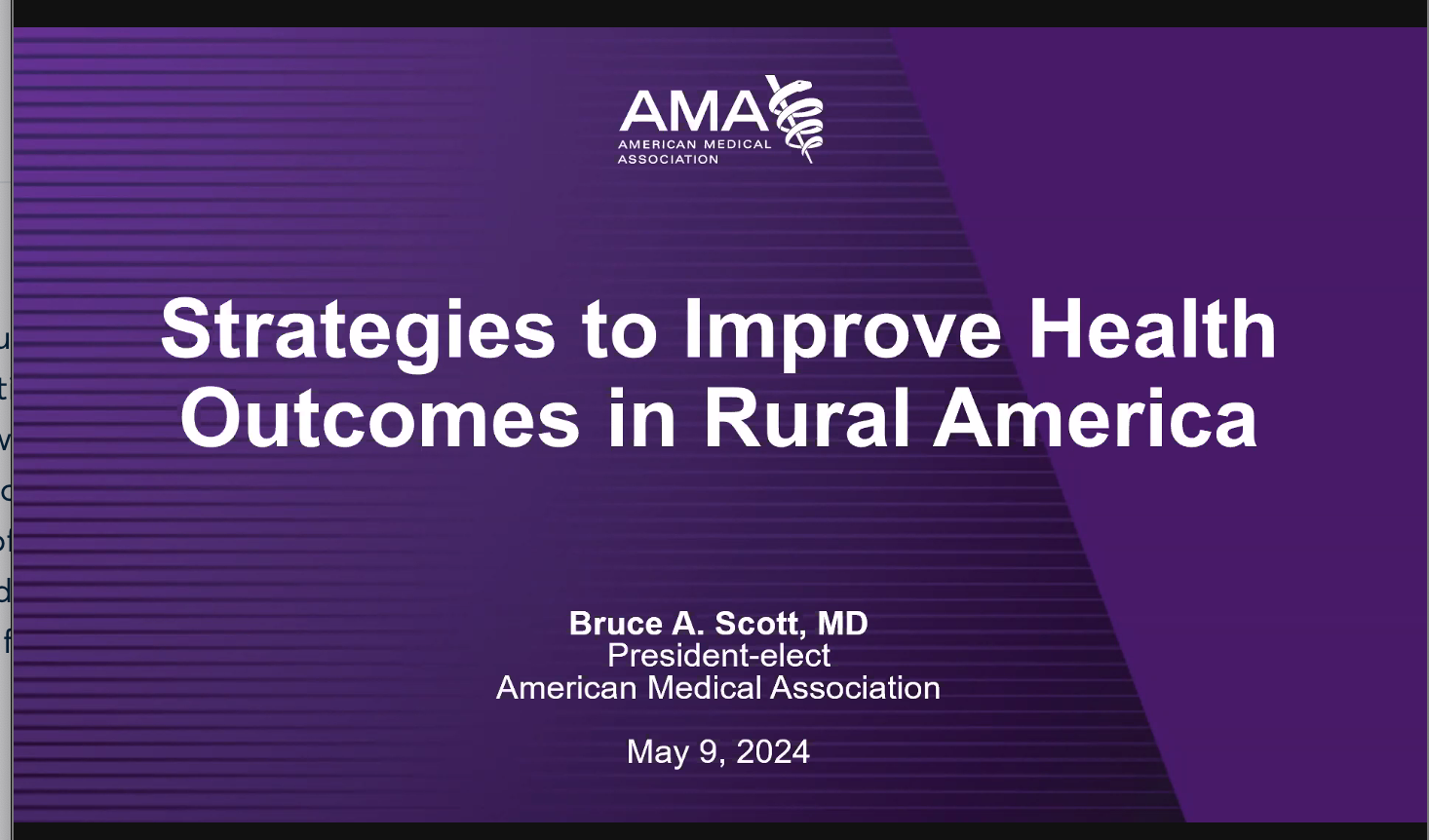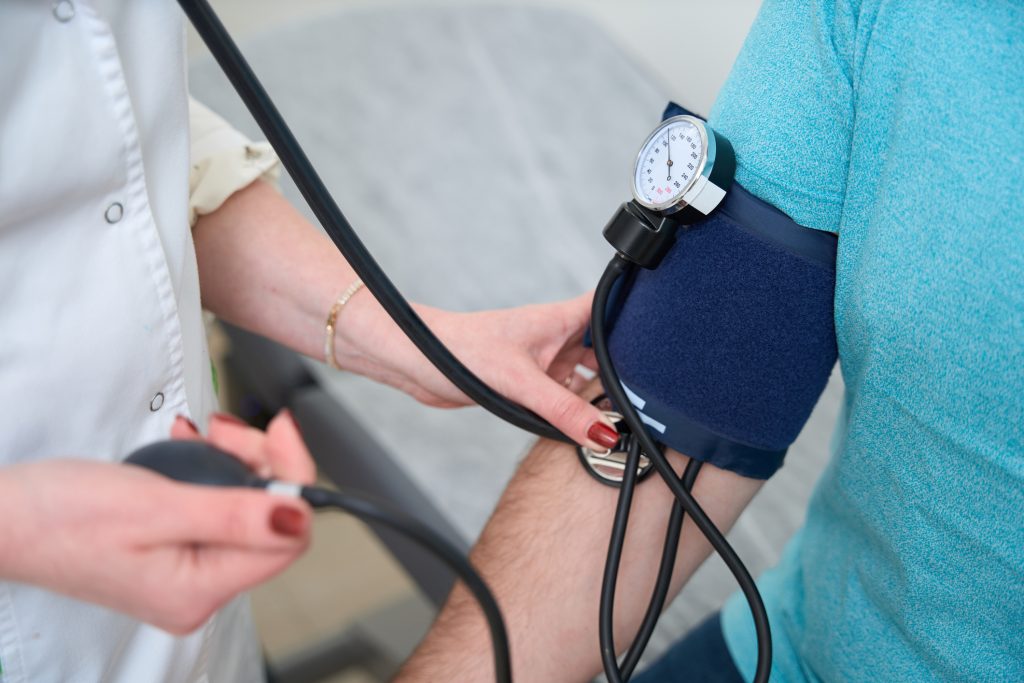Physician alarmed by concerning health trends in rural America

More people live in rural areas than you might think.
“More than 15% of the U.S. population, 46 million people, live in rural areas,” said Dr. Bruce Scott, president-elect of the American Medical Association. “That means when you add it all up, the people and the families living in those small towns, farms and ranches across the country, you’re talking about a population that exceeds the people living in America’s largest 20 cities combined.”
Scott spoke at the National Rural Health Association’s Annual Conference in New Orleans, Louisiana, recently. He’s very concerned for the health of those living in rural America.
“Rural health is America’s health, and we need policymakers to understand that,” Scott said. “The American Medical Association is deeply concerned about the ever-widening health disparities between urban and rural communities.”
Health concerns
Scott said disparities are at the root of why rural Americans suffer from disproportionately high rates of heart disease, cancer, stroke, respiratory illness, diabetes and unintentional injuries. Physicians are strained by a number of issues, and he touched on the increased consolidation across health care, a broken Medicare payment system, barriers to care and health crises impacting both patients and physicians.
Scott said according to some studies, death rates in rural America are 20% higher than in urban areas. Some of the common health disparities driving such poor outcomes in these areas include economic pressures and the lack of job security.
“Sometimes they’re limited in access to healthy food and good living conditions,” he said. “Many of these individuals live below or are at the poverty level.”
AMA is focusing on the worsening health care worker and physician shortage in primary care and specialists in rural areas.
“We need to reverse these trends for all individuals to live a long, healthy and active life,” Scott said.
Scarcity of physicians
Scott said there are roughly 30 physician specialists for every 100,000 residents in rural areas compared to 263 specialists per 100,000 people in urban communities.
“But it’s not just specialists that are in short supply,” Scott said. “More than 130 rural hospitals have closed between 2010 and 2021, and many more are on the verge of closure today. Further reducing the access to health care is widening inequities.”
Last year, 65% of rural communities had insufficient access to primary care physicians, including pediatricians.
“There are insufficient residency spots for training doctors in rural areas to make up and take off some of the pressure of the physician shortages,” Scott said. “History has shown us that residents, 80% of the time, tend to wind up practicing within 80 miles of where they’ve done their residency, so residency location becomes very important.”
Medical schools are also receiving fewer applicants from those in rural areas. Those applicants are most likely to return to practice in rural areas, and Scott said even those considering practicing in rural areas must consider their student loan debt.
“Many of them are choosing not to return to rural areas to practice where the wages tend to be lower,” he said.
Burnout
One study showed that the shortage of qualified physicians could reach nearly 90,000 by 2036.
“Burnout is impacting almost two out of every three physicians,” he said. “A recent study by Mayo found that one in five physicians hopes to retire or leave clinical practice in the next two years. One in three plans to reduce the hours that they’re practicing.”
All of those things compound the access problem, particularly in rural areas.
So what about solutions? Scott believes there needs to be a stronger physician workforce built.
“That begins with supporting the physicians who are in practice today,” he said. “AMA is focused on fixing the systemic issues of our healthcare system that are known to be driving physician burnout and contributing to early retirement and physicians leaving practice altogether.”
Kylene Scott can be reached at 620-227-1804 or [email protected].

Medicare reform can help, AMA president-elect says
By Kylene Scott
Problems associated with the Medicare physician payment system and the administrative burdens that take physicians away fromcaring of patients lead to burnout, and Dr. Bruce Scott said they’re emblematic of a broken and unsustainable health care system.
“Physicians have known for some time that our Medicare payment system that reimburses physicians for care for Medicare patients was falling behind,” said Scott, president-elect of the American Medical Association. “This is creating severe financial stress for physicians, particularly those in private practice, like me, who are also the backbone of the health care safety net in rural areas.”
When adjusted for inflation, the payment rate to physicians for Medicare patients has dropped 29% since 2001. Scott said the AMA has been working on reductions of the payment cuts.
“We were successful in reducing the cuts, but we still faced over a 2% cut in those years,” he said. “During the same period of time, practice costs have risen substantially.”
Employees are feeling the sting of inflation at rural practices, and they are asking for increased wages.
“Making matters worse is that the private payers and the other insurers are well aware of the downward spiral of the Medicare payment system,” Scott said. “And as a result, what they’ve done is linked their payment to the Medicare payment structure.”
When doctors lack the resources to take care of patients, they’re often faced with having to make difficult choices, such as not investing in the latest, newest equipment or reducing the number of employees. Some have had to stop accepting new Medicare patients or limit the number, while others have stopped taking them at all.
“In any of these cases, it’s the patients who lose,” Scott said. “The AMA and the other leading state and national physician organizations have been pushing Congress for years, but even more so today, to reform this broken Medicare system. We need a system that is sustainable, predictable and provides at least an annual inflation update that encourages patients’ choice rather than consolidation. We need Congress to act.”
Administrative burdens are another major drive of physician burnout, according to Scott. These burdens take physicians away from caring for patients. Physicians spend on average two hours on administrative work for every one hour that they spend taking care of patients, he said. That time could be better spent taking care of patients, particularly when there is a shortage of physicians.
Third-party payers
Prior authorization requirements and third-party payers to get approval for care of patients is high on the list of burdens for physicians.
“On average, physicians complete 45 prior authorizations per week, and it’s worse in primary care,” Scott said. “The prior authorization process is overused, overly burdensome and wastes physicians’ time, but I’m even more concerned about the fact that prior authorization hurts patients.”
About a third of physicians have reported prior authorizations have led to serious adverse events for patients and their care because of delays or patients abandoning care.
“I can tell you that I experience this every day in my practice, as I have to get on the phone and justify to an insurance person who rarely has gone to medical school, has never seen the patient and sometimes can’t even say otolaryngology, much less tell me what the appropriate care is for my patients,” Scott said.
AMA is fighting for legislative fixes that will increase incentives for physicians to work in rural areas and to expand the number of residency spots, particularly in primary care. Scott said there also needs to be a change in the visa rules to allow qualified international medical graduates to continue to practice in America.
Scott said during the COVID-19 pandemic, telehealth and remote patient care was an essential tool for physicians to provide care to patients, particularly in rural areas where transportation can be a challenge. AMA is working to make the pandemic telehealth flexibilities permanent.
To read the report from the CDC visit www.cdc.gov/rural-health/php/public-health-strategy/public-health-considerations-for-leading-causes-of-death-in-rural-america.html?CDC_AAref_Val=https://www.cdc.gov/ruralhealth/cause-of-death.html.
Kylene Scott can be reached at 620-227-1804 or [email protected].



